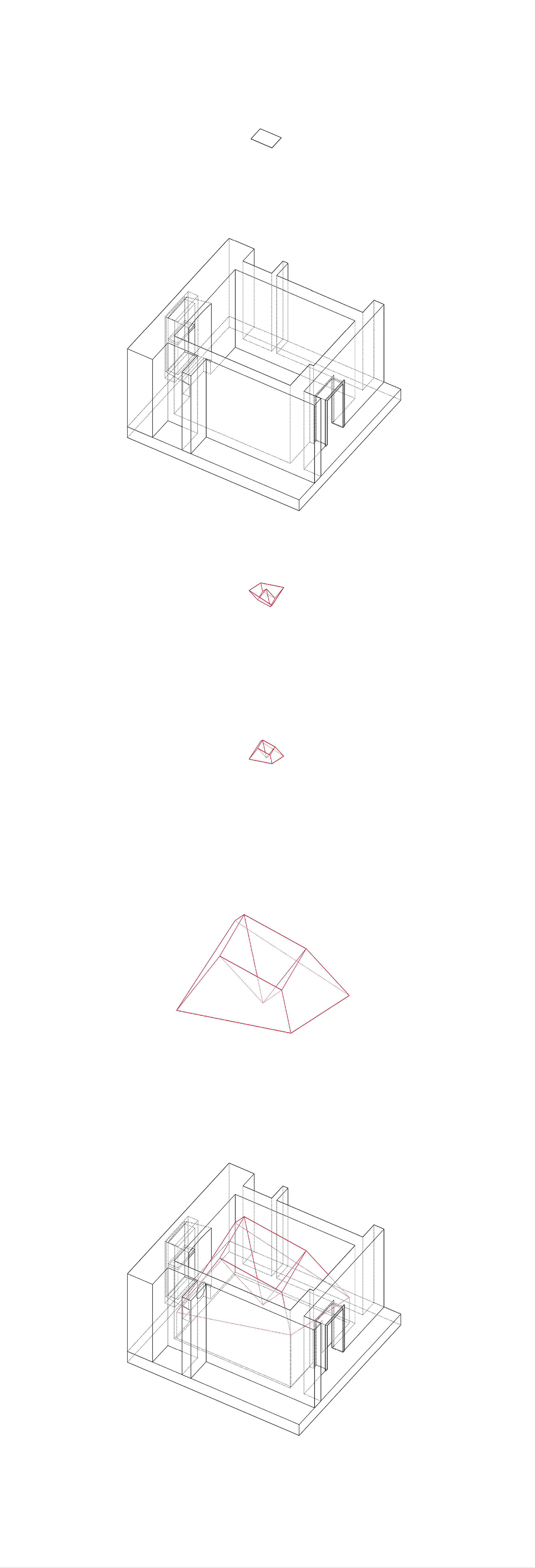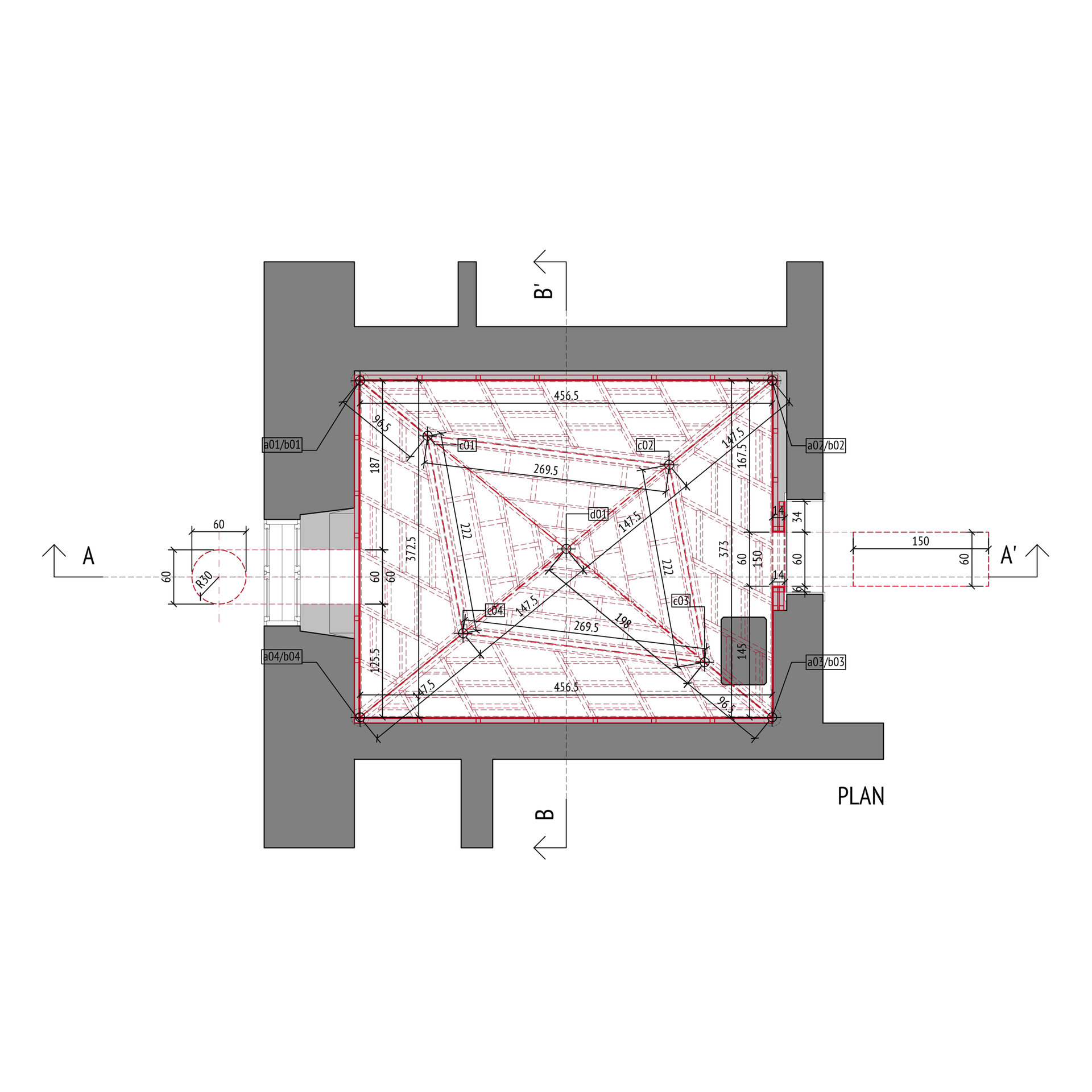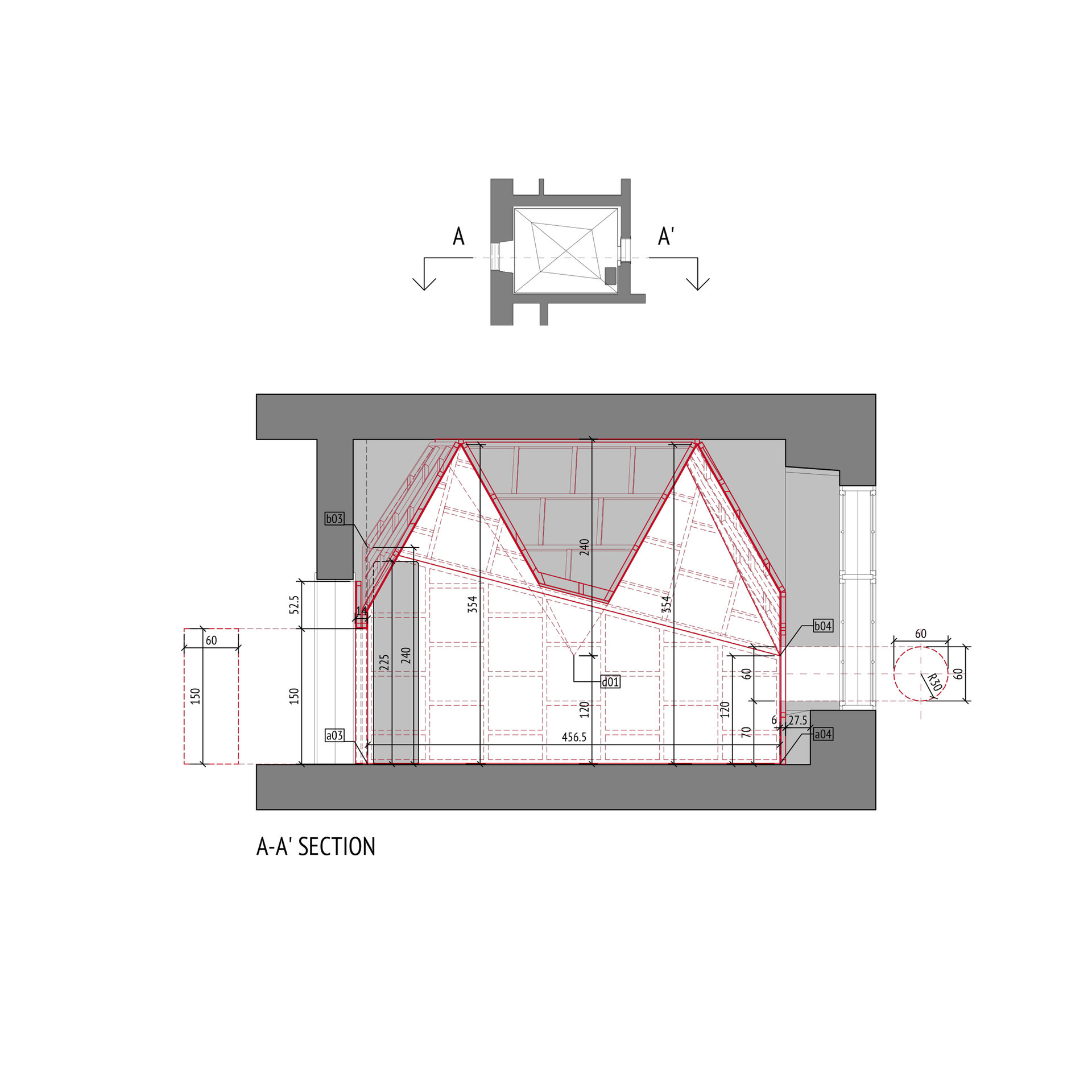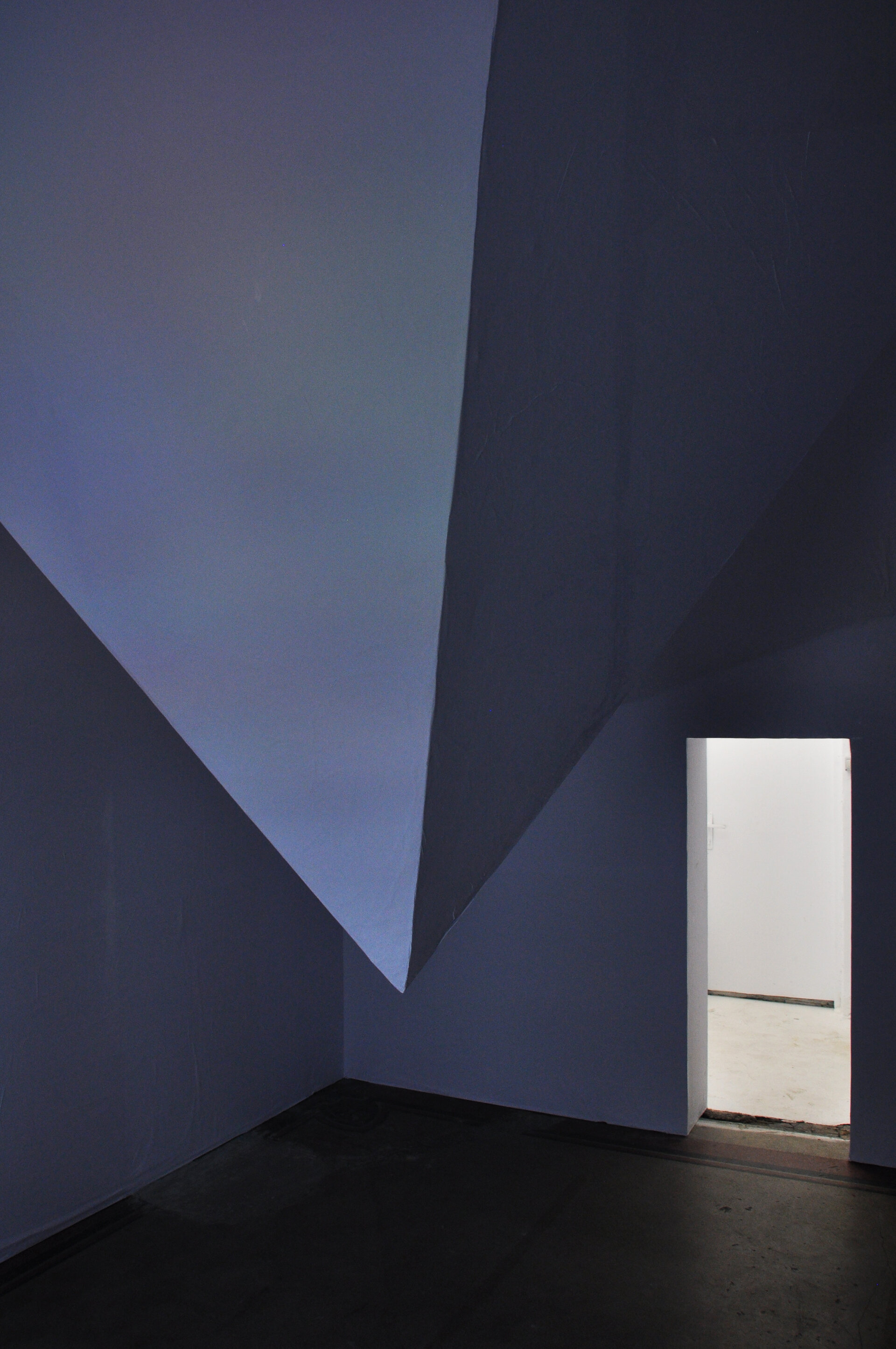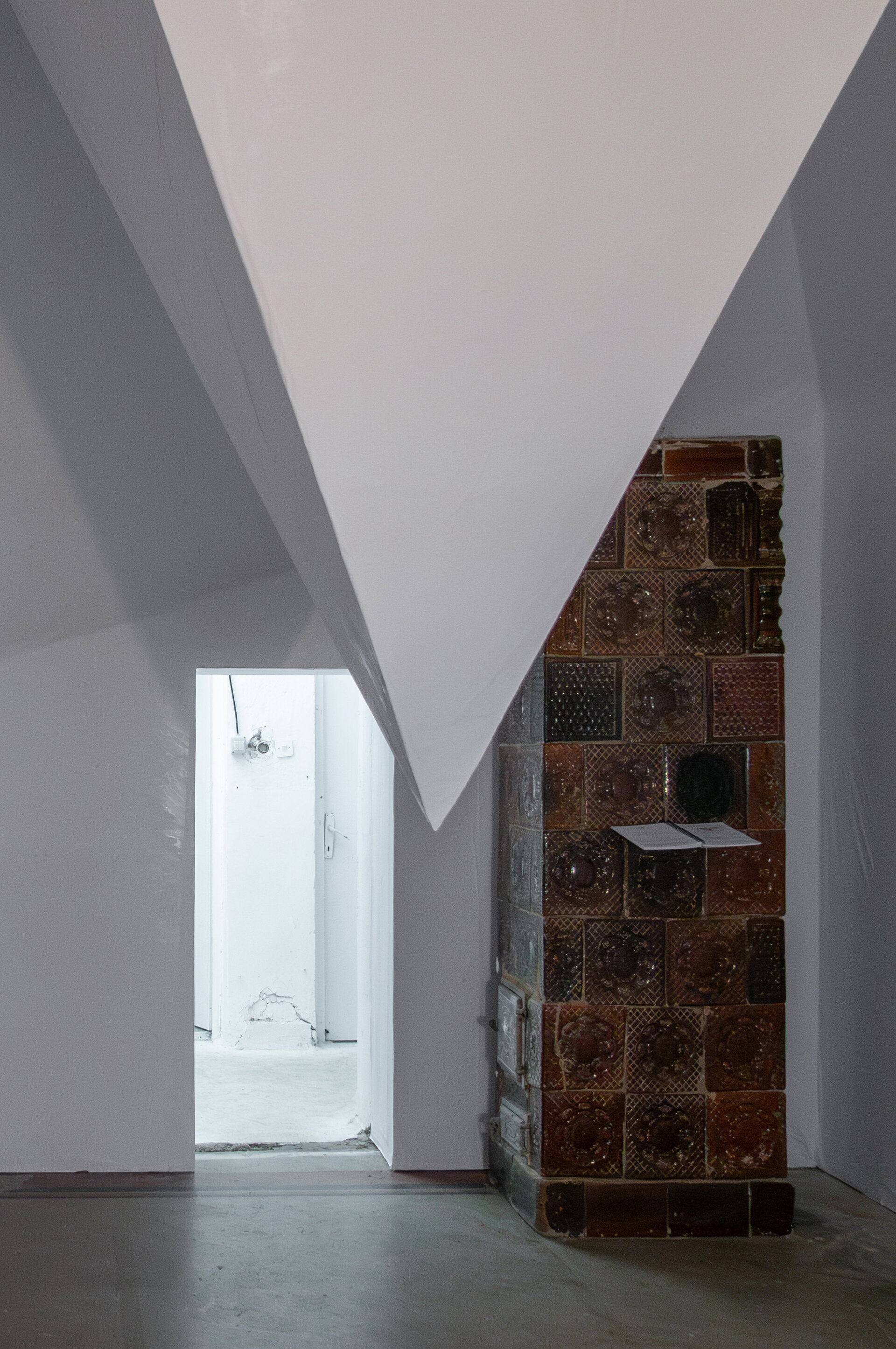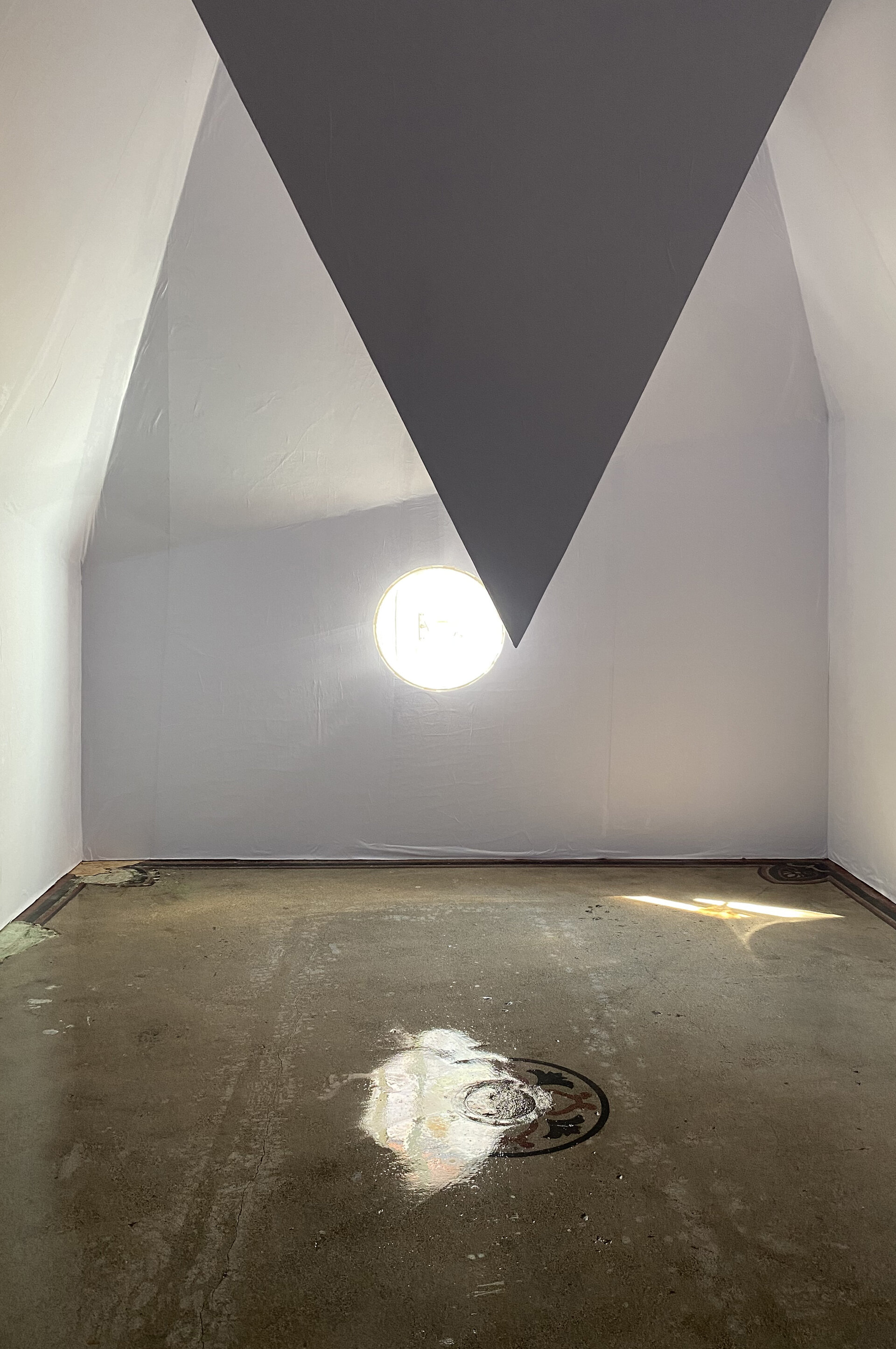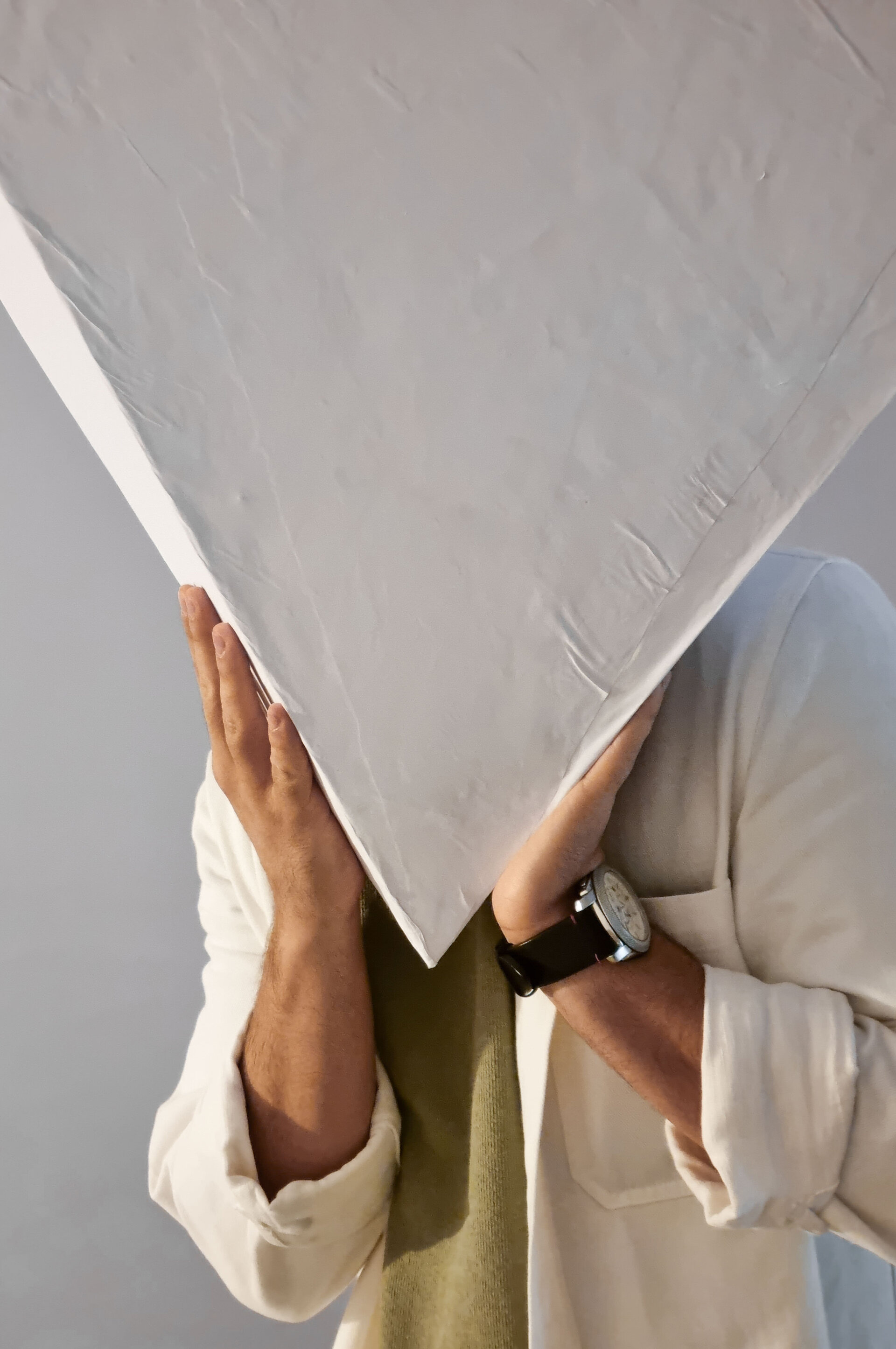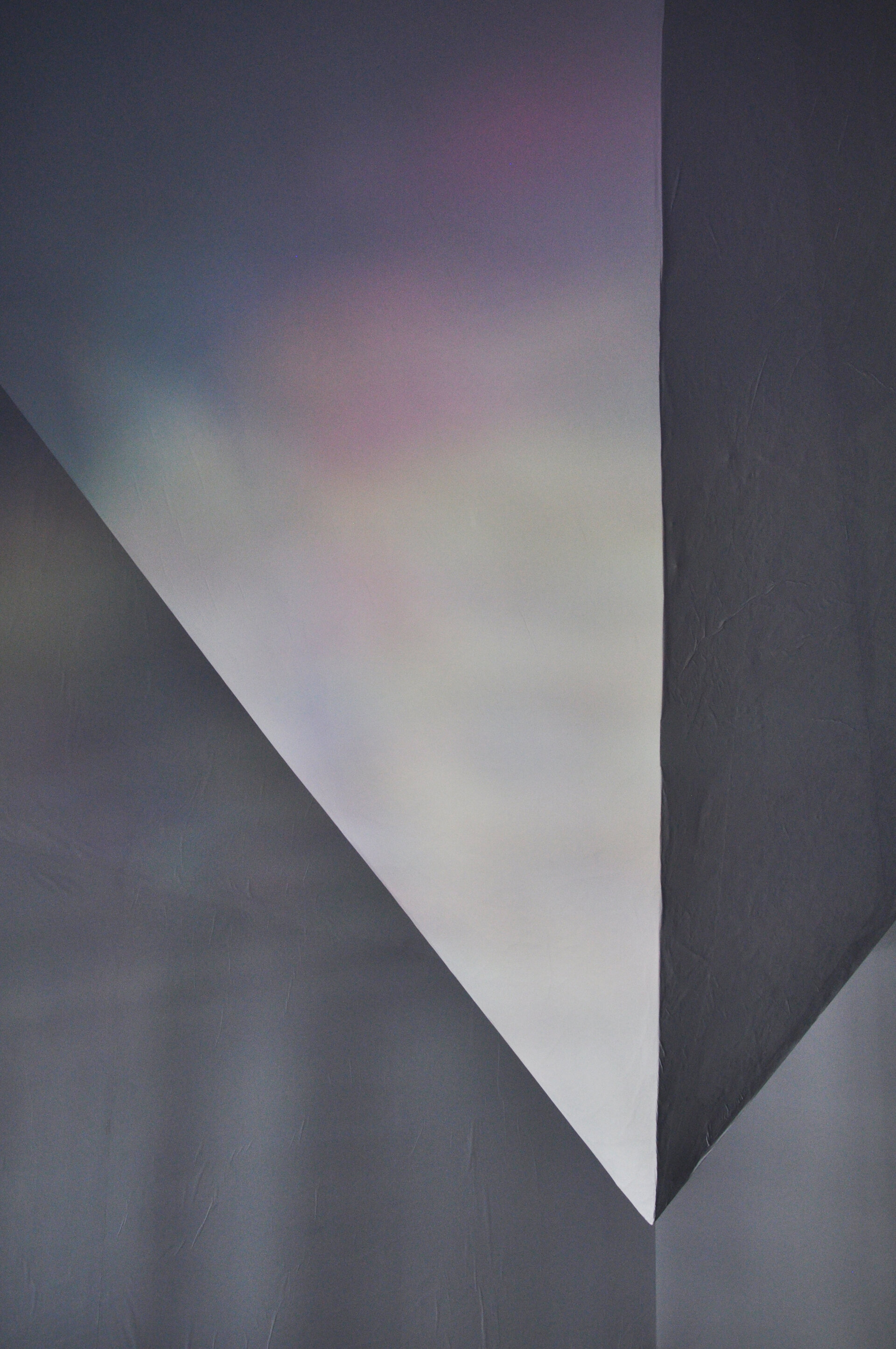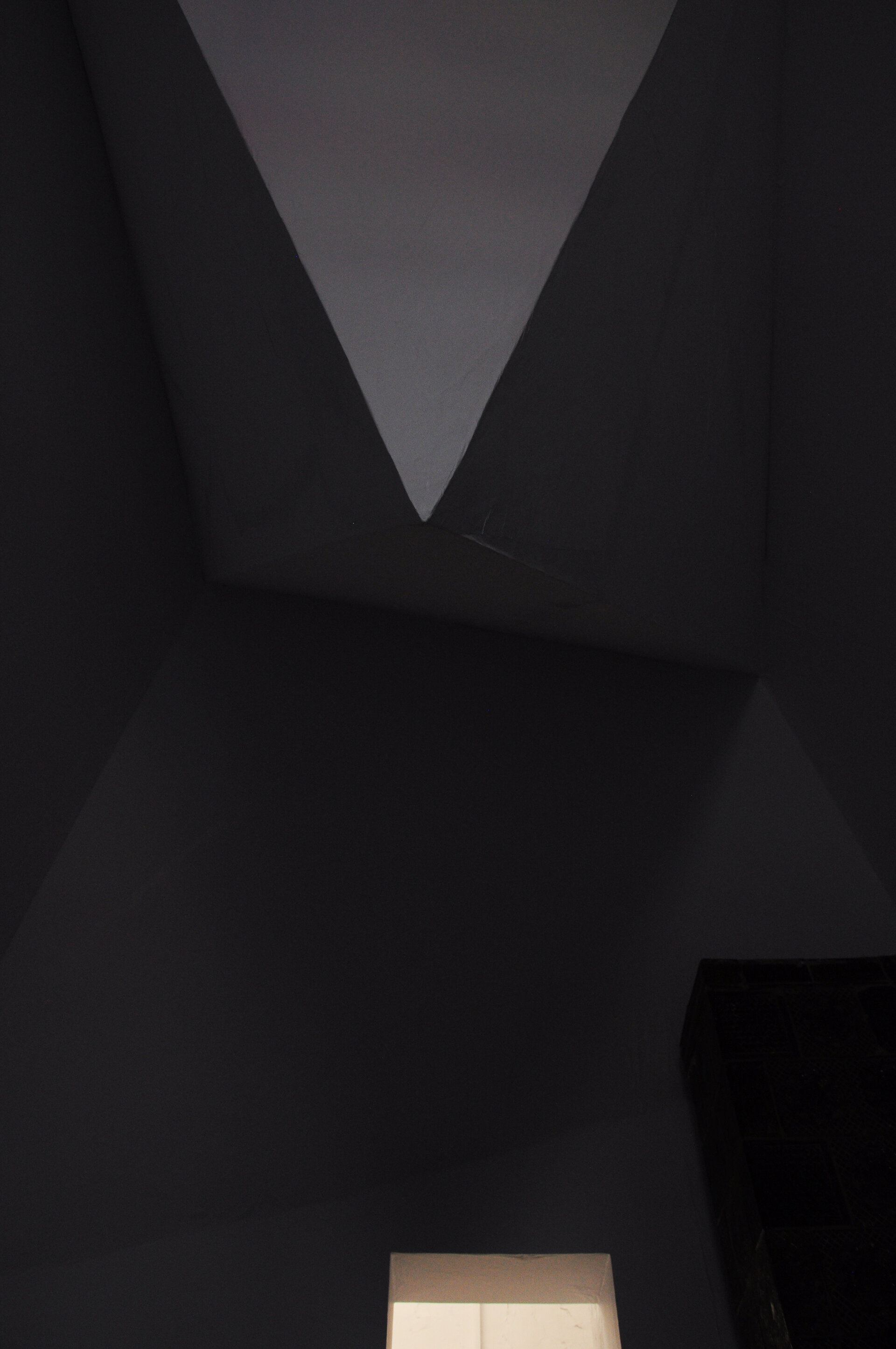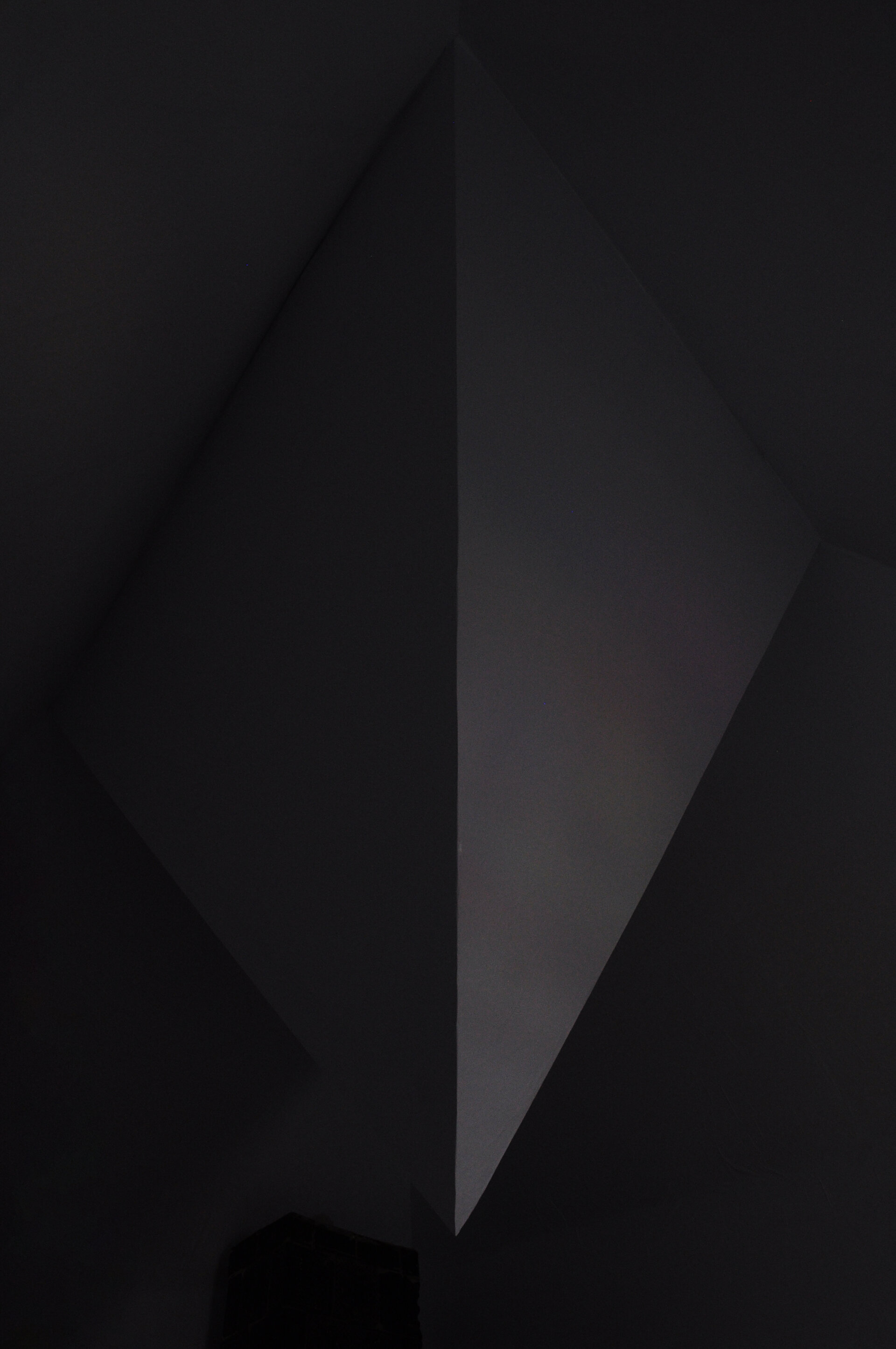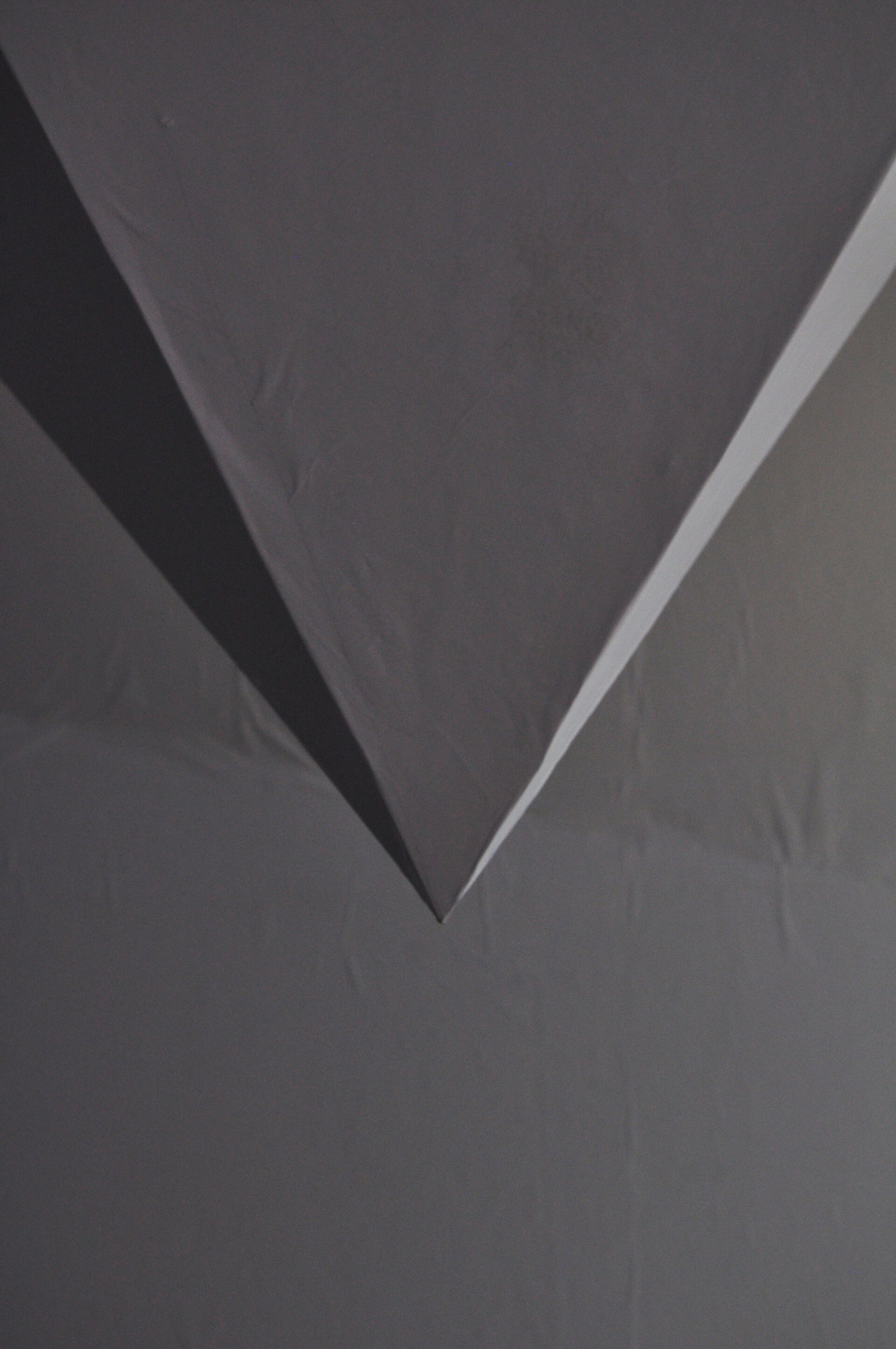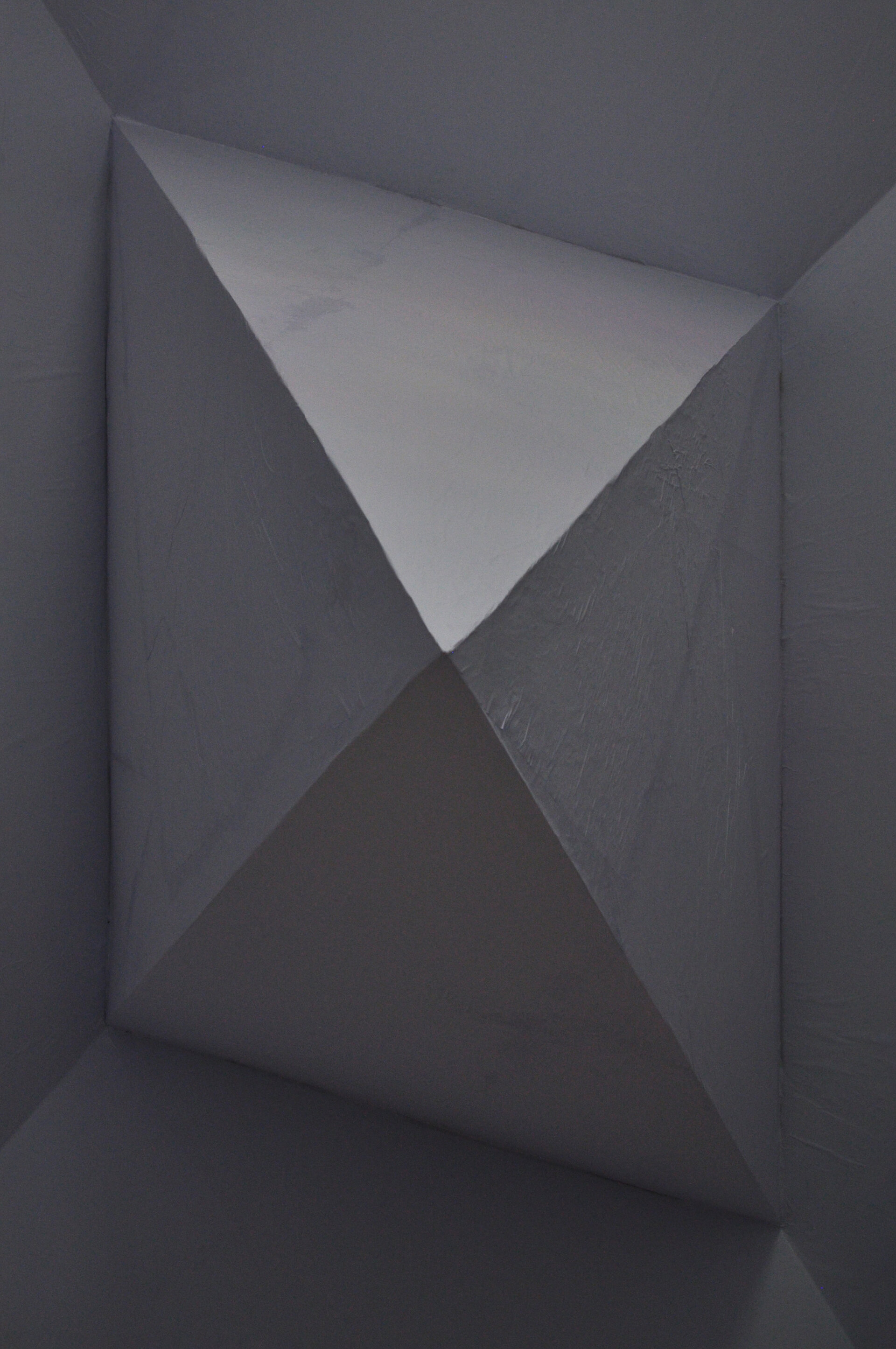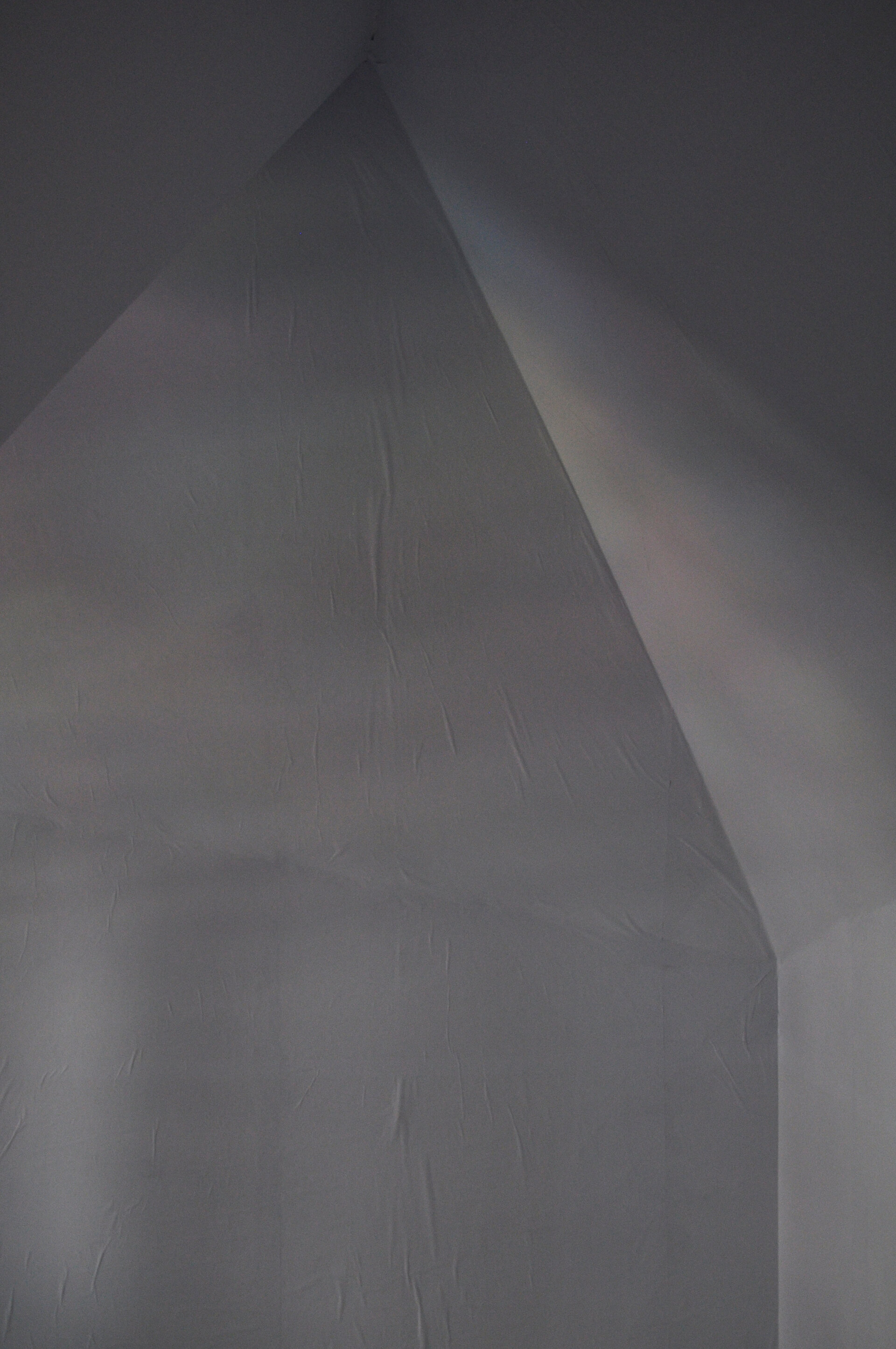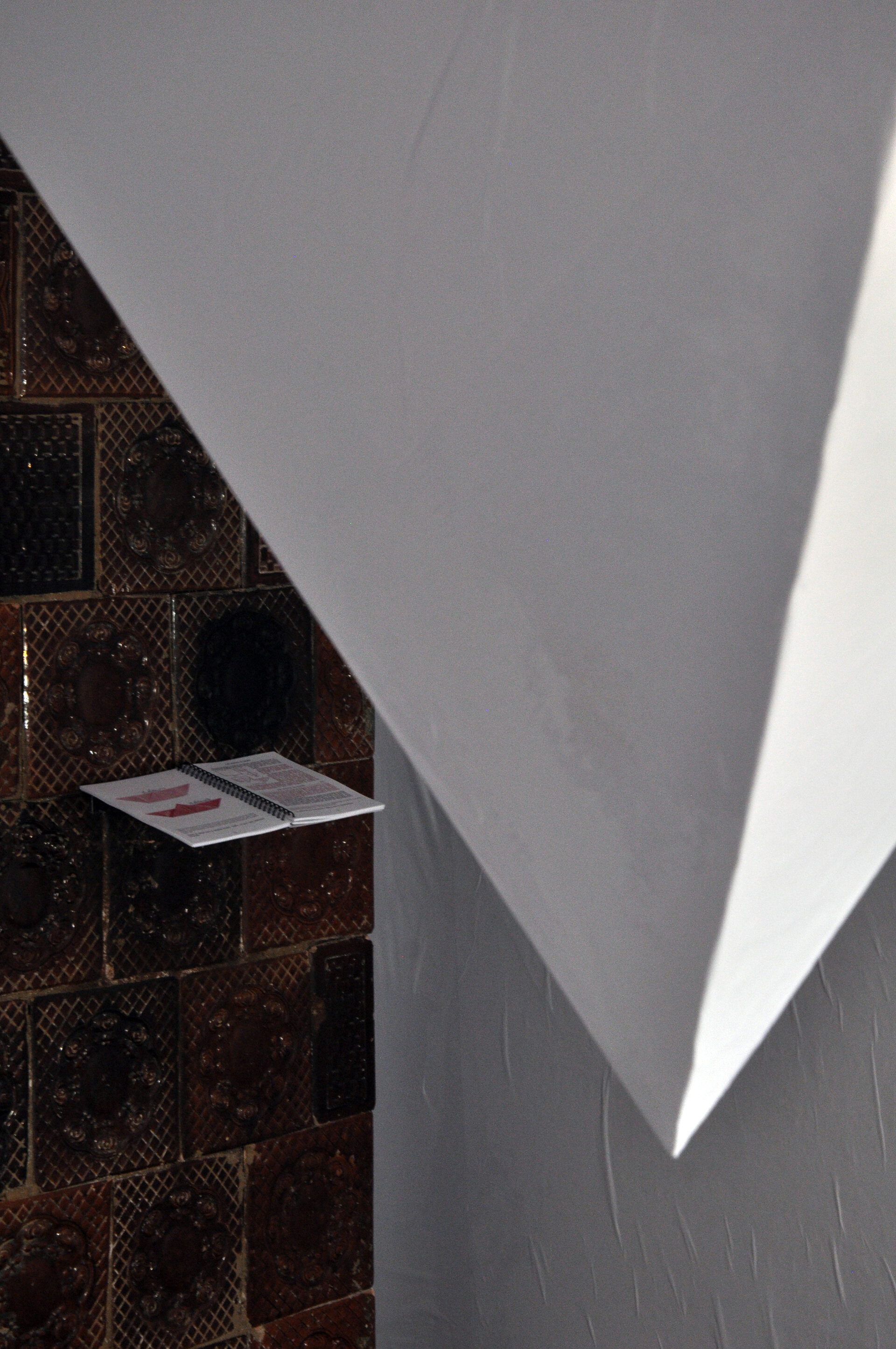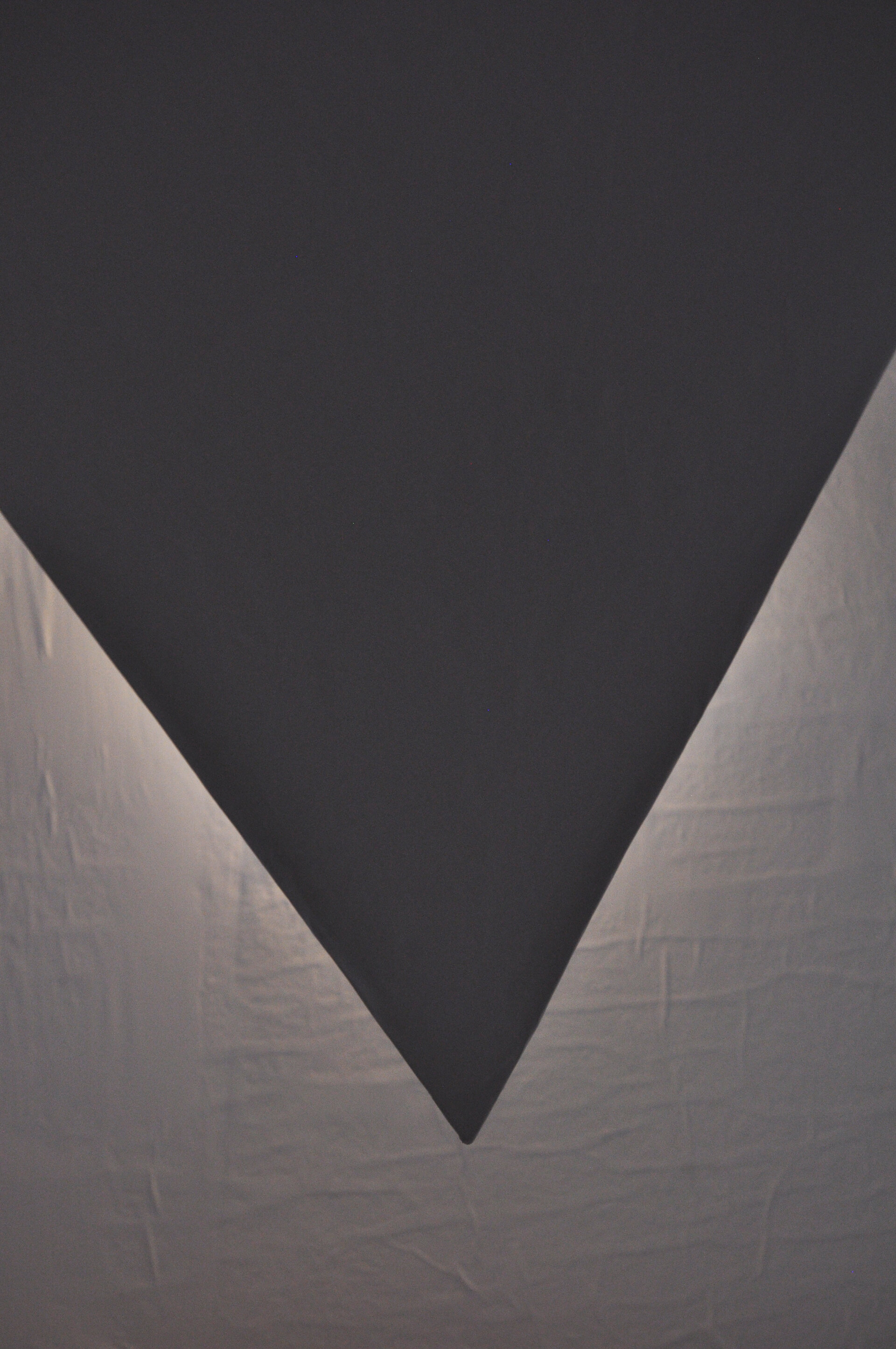
Paper Boat
Authors’ Comment
You have a sheet of paper and a room. Take the sheet of paper and fold it into a paper boat. Flip it upside down and then scale it to the size of the room. Merge these two together and you will end up with something that resembles neither a room, nor a paper boat. These are five steps to obtaining nothing in particular.
For centuries, the paper boat has been generally accepted as a literal “soft cover” for all forms of floating vehicles, a pure geometrical abstraction regardless of historical context, technological advancement, or craftsmanship. At the same time, the process of transforming a two-dimensional white piece of paper into a three-dimensional object implies a certain scale distortion that is intimately related to object-making activities, including architecture.
The pavilion focuses on emphasizing the inherent spatial potential of the paper boat by means of adapting it to the dimensions of a room. This collision alters the paper boat’s geometry and its relationship to the room’s coordinates to the point where it becomes a cover of a cover, an abstraction of both the initial paper boat and its hosting room. The boat is flipped and now adorns the room’s ceiling with an intricately tessellated vault, while its bow, stern, port, and starboard come to be tangent to the existing walls and “flood” their entire surface with a continuous white paper, wheat paste texture.
The “ʇɐoq ɹǝdɐԀ” pavilion has been accompanied by a thorough study investigating the occurrence of the paper boat in historical sources throughout the past five hundred years, both in the Western world and in the far East. This research has been part of the main exhibition at the 2024 Beta Biennial in Timișoara. The main theme of the exhibition, “cover me softly”, curated by Oana Stănescu, has been an exploration of covers across disciplines, mediums, and geographies – “To cover is to work with what’s already there. Cover also means shelter. To protect or hide. To conceal or disguise, to extend over time or space. To run for cover, to cover one’s back.”
- Constantin Brancusi: Romanian sources and universal perspectives
- Romanian Design Week 2024 - Central Exhibition
- “Below ground”, the permanent exhibition of the archeological museum in Bergen
- I started to see the colours
- STVL 0.2 _0.3
- The Monster, the Square and the Laughter
- Original Spaces | Legalized Gestures
- “Dan Popescu” Exhibition
- Exfoliated
- Oblic Studio Showcase
- SIT_2324. Shibaura Institute of Technology, Architecture & Landscape Laboratory. Diplomas exhibition. Sessions 2023 and 2024
- Paper Boat
- Touch Nature
- EPHEMERA Pavilion
- /SAC Rezumat
- EXF_SIST
- VIM Studio x Decorum Stand, Archyfest 2024
